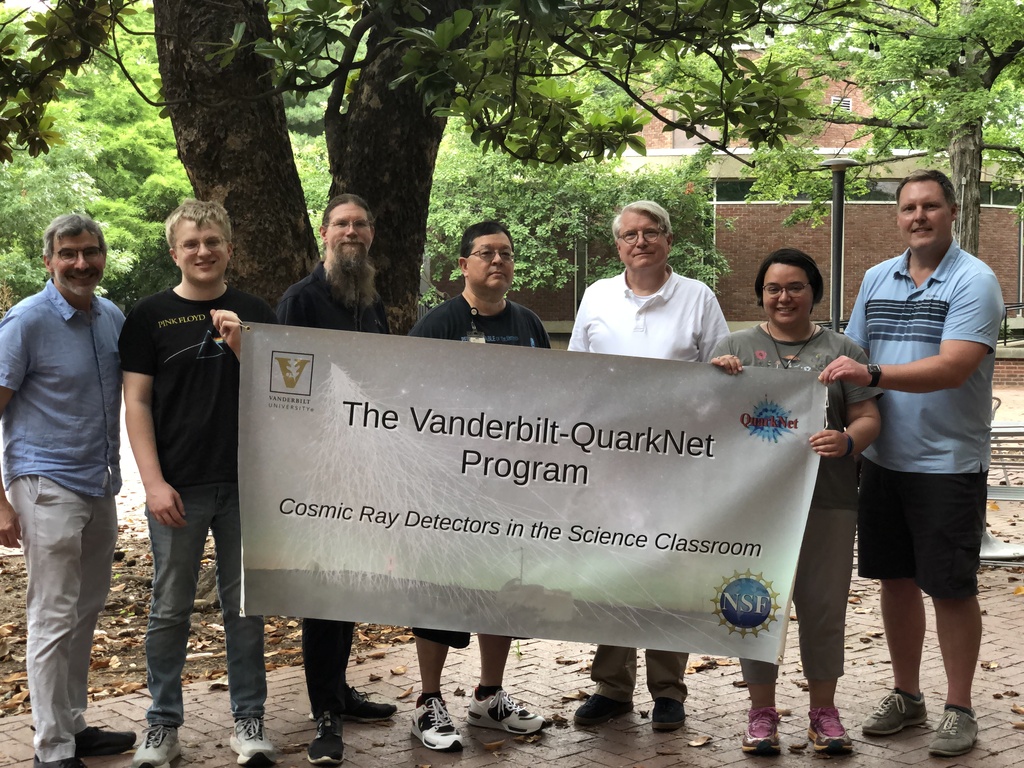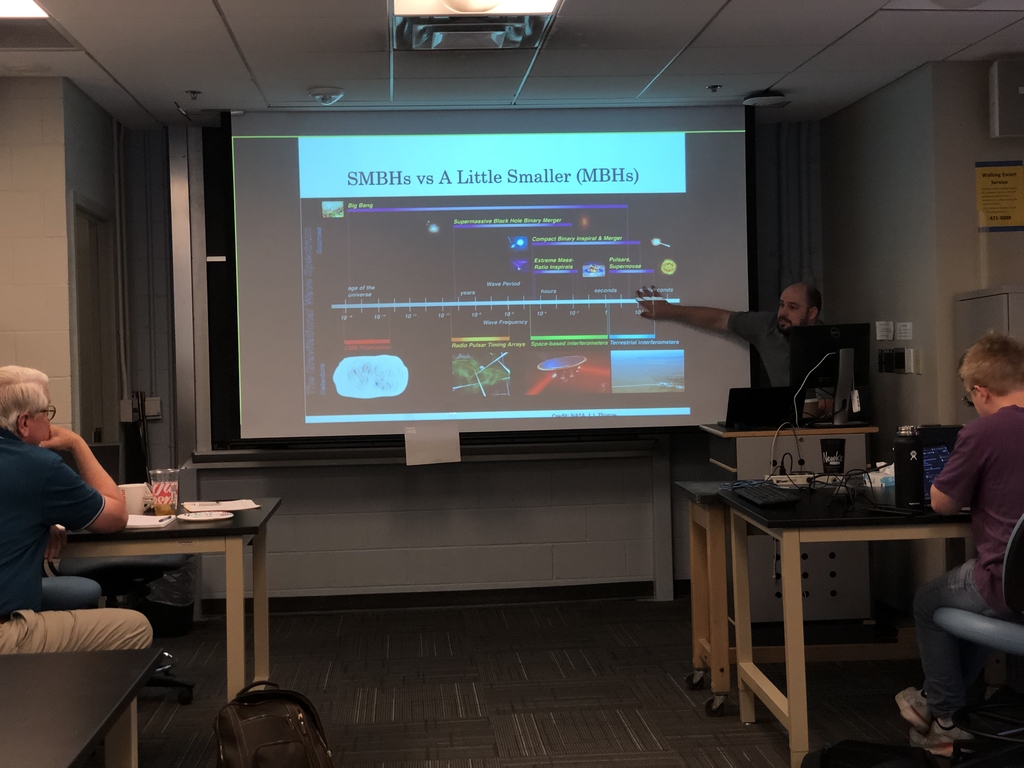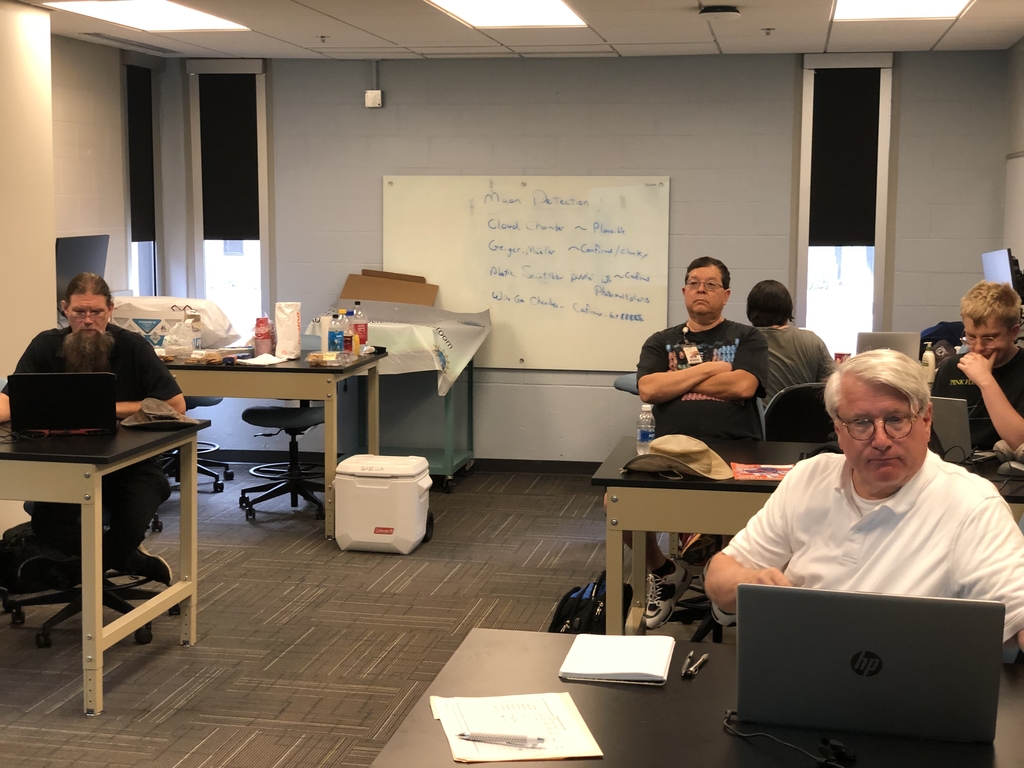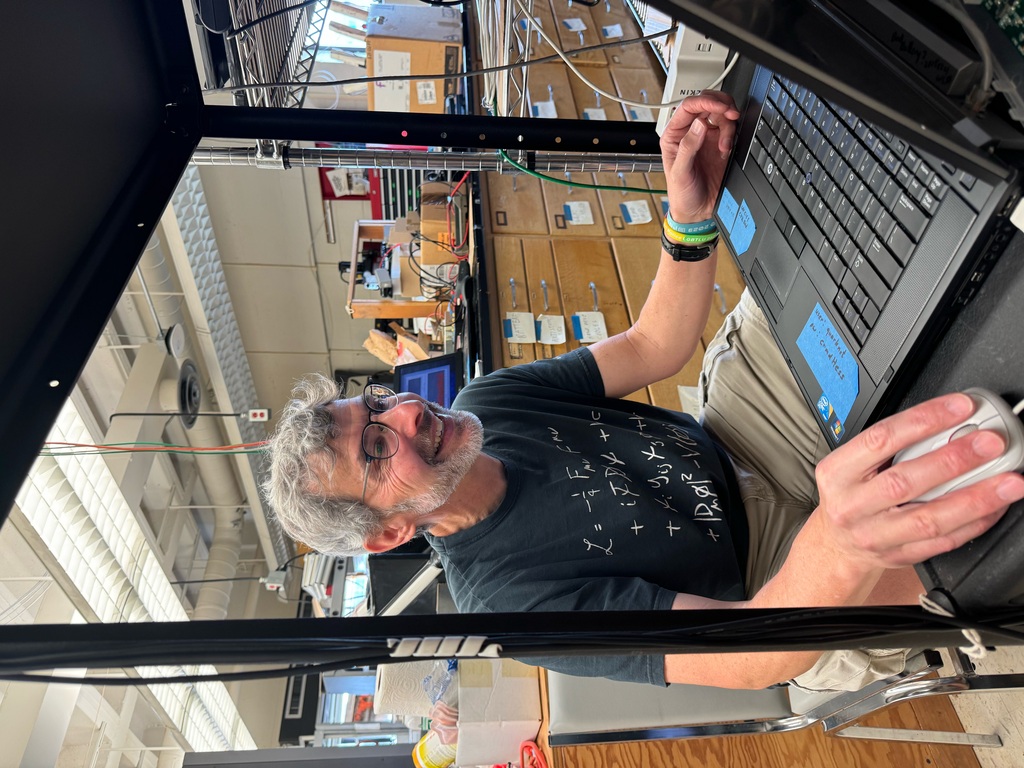Annual Report 2024 - Vanderbilt University
Vanderbilt University QuarkNet 2024
Personnel
The Vanderbilt University QuarkNet group was mentored by me, William (Bill) Gabella. I am stepping down as the mentor at the end of the summer 2024. I advised the teachers and students on the use of the Cosmic Ray Muon Detectors (CRMDs), maintained them, and helped with either setup of our loaned out CRMDs or with those that are permanently at a school. I also plann and host the summer workshop for the teachers. For several years we have had the help of several volunteers: Diana Gigante a retired physics teach and long-time QuarkNet teacher, Nick Spurlock a graduate student in our Biomedical Engineering Department, and Dr. Sara Frederick a post-doctoral research in astrophysics from our Department of Physics and Astronomy.
Cosmic Ray Muon Detectors
The Vanderbilt QuarkNet has several Center CRMDs: S/N 6181, 6165, 6891, 6851, 6795 are conventional cosmic ray muon detectors. We also have a set of scintillator detectors that are approximately 4"x16" with non-QuarkNet PMTs and are useful for measuring the attenuation of muons by materials stacked between them. These CRMD sets are routinely loaned to our high school teachers for their club and classroom work. There are several old PC style laptops running Linux and a couple of old Macintoshes also running Linux that can be used to operator the detectors. There are several CRMDs that are permanently in the schools:
S/N 6850 in Nashville, TN, with James Anderson;
S/N 6892 in Murfreesboro, TN, with Kim Baumann and Gayle Dawson.
The two detectors 6795 and 6851 work very well, and show very steady singles rates. With several new teachers showing interest, these are likely to be given to schools in the area. On a few channels in the other detectors, I do see long-term steady singles rates, for weeks and even months, and then sudden changes which may also be stable for weeks. I assume the PMT with voltage multiplier might be having problems. In these cases I measure the voltage from the Power Distribution Unit (black box) to be the desired value. These need further diagnostics and repairs.
It is my habit to run the detectors, usually at least three of them, all the time. I do upload the files but they are rarely blessed data sets, as the runs are long enough that step changes in the singles rates are quite common.
We are using the Java program Equip for managing the CRMDs running on the Fedora Linux laptops that we have. This works but there are several aspects of it that would be nice to have working and maintained: The GPS mapping and location no longer works. Perhaps an enhancement to output the scintillator/CRMDs geometry in a file format that can be uploaded to eLab. Also a facility to output a spreadsheet of the rise and fall times of complete pulses, like the older LabVIEW program capability, would be helpful. We use a custom Fortran program for this function currently. The Cosmic Ray eLab can also create this file. I strongly encourage the Python development for controlling the CRMDs which I understand is ongoing. That code base would be accessible to many high school students, and college students could be skilled enough in programming to contribute to the project.
Summer Workshop 17-21 June 2024
The main activity of the Vanderbilt QuarkNet Group is hosting the five-day workshop for current group members and interested science teachers. This year the theme was "Muon Decay" and "Muon Speed," or use of the CRMDs themselves. Shane Wood joined us in person for the week and Ken Cecire joined us online to greet the teachers during the workshop. Unfortunately we had only three teachers attend---all three veterans of the QuarkNet program. One other new teacher called that Monday to cancel.
The Google schedule for the week can be found here .
Monday is our day for introductions and talks from scientists---news and other scientific enrichment talks. We heard from faculty and graduates students on their research areas. The talks included Nick Spurlock from Biomedical Engineering Department to discuss testing methods including polymerase chain reaction amplification of DNA and novel research methods---tests now more generally familiar since the COVID pandemic. Bill Smith and Krystal Ruiz-Rocha discussed gravitational waves from the LISA and LIGO detectors perspective. Will Johns talked about CMS, CERN, and the Pixel Detector in CMS. Aaron Stenmo discussed Quasars and Active Galactic Nuclei, and Roman Berens gave a talk on Black Holes and Theoretical Physics. These talks were well received.
Tuesday started the discussion of muons, especially the muon lifetime. This included activities lead by Shane, Muon Lifetime Dice, and Muon Lifetime Cosmic Muons. We were reminded of one of the last workshops lead by Dr. Med Webster where we took muon flux data at Nashville and then later in the week at the top of Mt. Mitchell, NC, at an altitude of 6,684 feet compared to Nashville at about 240 feet. This was a classic experiment showing time dilation. We also re-visited the speed-of-muon experiment with the CRMDs.
Wednesday and Thursday included collecting and analyzing the data collected. Shane showed us a new method for analyzing the data collected in the speed-of-muon experiments. This is to plot of delta T vs delta L and use that for finding the speed. Our previous methodology, which highlights the systematic errors in the setup with the two detectors of interest in a normal configuration, and then data collected with the scintillators only swapped. Clearly the muon takes the same time, using statistics, to cross the gap while the systematics of the time delay in cables, connectors, and electronics stay the same. Changing the delta L several times allows more points on the plot, though as delta L becomes smaller other errors may become relatively larger. The plot method also allows for data analysis that high school students are learning and becoming facile with.
On Friday we considered the collected data for the muon decay experiment with the CRMDs. We found about 690 tagged as decay events of the 644,000 events in the ~15h of data collection.

Outlook
We have a great need to create an interest among teachers in the area, especially new teachers. The previous group was very loyal and many kept returning but many of those teachers have either been promoted, retired, or for some reason they no longer participate. I often have queries by new teachers from my text heavy (need a flashy brochure for the workshop) announcements. But rarely do they join us, or if they do, they seem not to see a utility for the program in their classrooms. Seems I could have done better there. One idea from a few years ago, I had an extra one-day workshop for mostly new teachers. It is much more accessible for many folks in the summer. Though in the end, I may have had only one teacher join our group. More presentations to teachers that are accessible, and use of a principal teacher seem to me good ideas to help the program here.



Links of Interest
GitHub page for 2024 workshop https://github.com/gabella/VandyQuarkNet/tree/master/quarknet2024
Local web page, out-of-date http://www.hep.vanderbilt.edu/~gabellwe/qnweb
Facebook group page https://www.facebook.com/groups/682323215235912/
Vanderbilt QuarkNet Page (drupal, i.e. here) /group/vanderbilt-university-quarknet-center
Vanderbilt Data Science Institute https://www.vanderbilt.edu/datascience/
[Edited by Bill Gabella 20241011]
